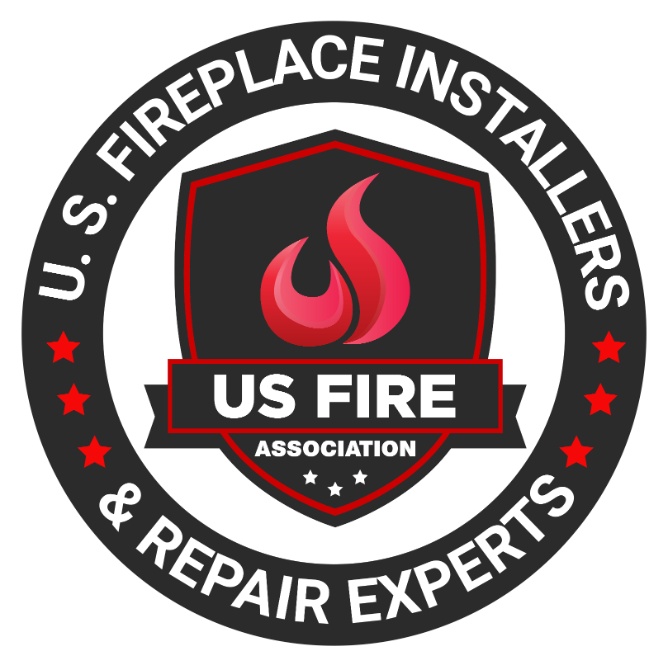Table of Contents
- 1 Why Are Garage Doors in Short Supply?
- 2 What Factors Contribute to the Shortage of Garage Doors?
- 3 How Has the COVID-19 Pandemic Affected the Garage Door Industry?
- 4 What Are the Consequences of the Garage Door Shortage?
- 5 What Can Homeowners Do to Deal with the Shortage?
- 6 How Long Will the Shortage Last?
- 7 Frequently Asked Questions
Garage door shortages have become a growing concern for homeowners and contractors.
We explore the factors contributing to the shortage, like supply chain disruptions, high demand, and labor shortages. We discuss the impact of the COVID-19 pandemic on the garage door industry, including an increase in home improvement projects and the closure of manufacturing plants.
Delve into the consequences of the shortage, such as delays in construction and higher prices. Get tips for homeowners on how to deal with the shortage and predictions from industry experts on how long it may last.
Why Are Garage Doors in Short Supply?
The shortage of garage doors has become a prevalent issue due to a combination of high demand, manufacturing delays, supply chain disruptions, and limited availability.
As more homeowners are investing in home renovations and upgrades, the demand for garage doors has soared. This surge in demand, coupled with manufacturing delays caused by various factors such as labor shortages and material shortages, has created a bottleneck in the production process. Supply chain disruptions, including transportation issues and global trade challenges, have further hindered the timely delivery of garage doors to consumers. Consequently, the overall availability of garage doors has been severely impacted, leaving many customers facing extended waiting times and limited options.
What Factors Contribute to the Shortage of Garage Doors?
Several key factors contribute to the shortage of garage doors, including production challenges, distribution issues, fluctuating availability, and rising consumer demand.
These production challenges often stem from disruptions in the supply chain, such as delays in raw material procurement or manufacturing processes. Distribution issues may arise due to inefficiencies in logistics or transportation, prolonging the time it takes for garage doors to reach sellers and customers. Fluctuating availability of garage doors can be influenced by market conditions, seasonal trends, and global economic factors, further complicating the situation. The increasing consumer demand for garage doors, fueled by a growing number of homeowners and construction projects, puts additional strain on an already constrained supply chain.
Supply Chain Disruptions
The garage door industry faces significant supply chain disruptions, resulting in inventory shortages, industry challenges, and various supply chain issues affecting the overall production and availability of garage doors.
These disruptions have led to delays in receiving key components and raw materials needed for manufacturing garage doors, causing production slowdowns and hindering companies’ abilities to meet customer demands.
Transportation bottlenecks have resulted in increased lead times and higher shipping costs, putting further strain on the industry.
The lack of transparency and communication among suppliers has made it difficult for companies to effectively plan and manage their inventory, exacerbating the challenges faced by the garage door sector.
High Demand
The surge in high demand for garage doors has led to increased consumer demand, rising sales volume, and a strain on available stock due to the growing interest in home improvement projects and construction industry needs.
This heightened demand has prompted manufacturers to ramp up production to meet the needs of customers looking to enhance their homes and commercial properties. As a result, the industry has witnessed a significant uptick in sales, with many companies reporting record-breaking numbers.
The surge in interest in home improvement and construction projects has been a driving force behind the increased demand, as more individuals are investing in upgrading their properties. This trend is expected to continue as the housing market remains strong, fueling the need for high-quality garage doors.
Labor Shortages
Labor shortages in the garage door industry have created challenges in production capacity, logistical operations, and warehouse capacity, further exacerbating the existing supply constraints and stock shortages.
These shortages not only hamper the timely completion of manufacturing processes but also lead to inefficiencies in managing raw materials and finished products. The reduced workforce availability hampers the ability to meet increasing demand, causing delays in fulfilling orders and impacting customer satisfaction. The strain on existing employees due to increased workloads can result in burnout and decreased overall productivity, posing long-term risks to the company’s reputation and profitability.
How Has the COVID-19 Pandemic Affected the Garage Door Industry?
The COVID-19 pandemic has significantly impacted the garage door industry by reshaping consumer needs, altering the ordering process, and causing delays in product deliveries due to various restrictions and disruptions.
Consumer needs in the garage door industry have evolved towards contactless options and enhanced security features as people prioritize safety and convenience. Consequently, companies have had to adapt their ordering processes to accommodate virtual consultations and remote installations. These changes, while addressing new consumer demands, have also led to delays in product deliveries as factories and supply chains faced challenges in meeting the sudden surge in demand amidst workforce limitations and transportation disruptions.
Increase in Home Improvement Projects
The COVID-19 pandemic sparked an increase in home improvement projects, leading to higher demand for garage doors, installation services, and repair services in response to the growing focus on residential construction and property enhancements.
Many homeowners found themselves spending more time indoors due to lockdowns and remote work arrangements, prompting a reevaluation of their living spaces. With the desire to create functional and aesthetically pleasing environments, garage door upgrades became a popular choice. As families sought to maximize their property’s potential, the need for professional installation and repair services surged. This trend not only improved the curb appeal of homes but also invested in the long-term value and durability of residential properties.
Closure of Manufacturing Plants
The closure of manufacturing plants due to the pandemic led to product scarcity, reduced production efficiency, and strained manufacturing capacity, contributing to the challenges faced by the garage door industry.
This disruption in the manufacturing sector has had a ripple effect on the availability and quality of garage door products. With limited supply, garage door companies are struggling to meet the demands of consumers, resulting in longer lead times and potential delays for installations or replacements. The reduced production efficiency has also impacted the overall workflow in the industry, leading to bottlenecks in the manufacturing process. These strains on manufacturing capacity have forced companies to reevaluate their production strategies and supply chain management to navigate through these turbulent times.
Changes in Consumer Behavior
The COVID-19 pandemic influenced changes in consumer behavior, affecting their expectations, purchasing patterns, product selection criteria, and access to available garage door products, leading to shifts in the market dynamics.
Consumers have become more inclined towards online shopping and contactless delivery options as a result of the pandemic. The need for safety and hygiene has become a top priority, influencing product choices towards those perceived as more sanitary. With the increase in remote work and stay-at-home measures, there has been a surge in demand for home improvement products like garage doors, creating new challenges in product availability and supply chain management.
What Are the Consequences of the Garage Door Shortage?
The garage door shortage has resulted in various consequences such as delayed shipments, low stock levels, and pricing fluctuations, impacting both consumers and industry players due to the supply chain challenges.
Due to the delayed shipments, consumers are experiencing longer waiting times for garage door installations, leading to inconvenience and potential disruptions in their daily routines. Industry stakeholders are grappling with stock level issues, struggling to meet the demand for garage doors, and facing lost sales opportunities. The pricing fluctuations caused by the shortage are further complicating matters, as consumers may end up paying higher prices for garage doors, impacting their budget planning and purchasing decisions.
Delays in Home Construction and Renovation
The shortage of garage doors has led to delays in home construction and renovation projects within the construction industry, affected by delivery delays and economic factors resulting from the product scarcity.
As the demand for garage doors continues to outstrip the available supply, construction companies are grappling with longer lead times and increased costs. Builders are facing challenges in meeting project deadlines due to the extended wait times for essential components. The economic impacts of this shortage are also reverberating through the industry, with rising prices on existing inventory and uncertainty about future availability. These hurdles are further exacerbated by the growing competition for limited resources, creating a domino effect affecting various aspects of the construction process.
Higher Prices for Garage Doors
The shortage of garage doors has led to higher retail prices due to market conditions, pricing fluctuations, and warranty coverage changes reflecting the product scarcity in the industry.
This scarcity of garage doors has created a competitive pricing environment, with retailers adjusting their prices to meet the demand-supply gap. As the market grapples with limited availability of these essential products, the pricing dynamics have become increasingly volatile. Consumers are now faced with fluctuating costs and potentially higher investments in securing garage door replacements.
Warranty coverage has also been impacted, with manufacturers revising their policies to address the challenges brought on by the shortage. This scenario has highlighted the significance of supply chain resilience and its influence on pricing strategies in the industry.
Difficulty in Finding Replacement Parts
Consumers are facing difficulties in finding replacement parts for garage doors due to limited stock availability, retailer inventory challenges, order fulfillment delays, and the growing demand for energy-efficient solutions.
This situation has been exacerbated by the fact that many retailers struggle to keep up with the diverse range of garage door parts that customers need. As a result, consumers often find themselves waiting longer than anticipated for their orders to be fulfilled.
The push for energy efficiency in garage door products has further narrowed the selection available, making it even more challenging for individuals to locate suitable replacement parts that meet their specific requirements. These challenges highlight the need for improved supply chain management and better coordination between manufacturers, retailers, and consumers.
What Can Homeowners Do to Deal with the Shortage?
To address the shortage of garage doors, homeowners can consider utilizing alternative materials and exploring a wider product range to adapt to the limited availability of traditional options.
For instance, instead of solely relying on traditional wood or steel doors, individuals may opt for aluminum or fiberglass alternatives, which offer durability and aesthetics. Exploring a diverse product range that includes customizable options can provide homeowners with more flexibility in finding a suitable solution during times of scarcity. By considering these alternatives and expanding their search beyond conventional choices, homeowners can effectively navigate the challenges posed by garage door shortages.
Consider Alternative Materials
Homeowners can consider alternative materials for garage doors to address the shortage, exploring options influenced by raw material supply, global demand trends, production challenges, and the integration of safety features.
These alternative materials provide a range of benefits beyond just addressing supply issues. For instance, materials like aluminum, fiberglass, or composite wood offer durability while being lightweight, making them easier to operate and maintain. With global demand for more sustainable solutions increasing, these materials also contribute to eco-friendly practices within the home improvement sector. Despite some production challenges related to specialized manufacturing processes, advancements in technology have enabled the creation of high-quality garage doors with enhanced safety features to meet industry standards.
Plan Ahead and Be Flexible
Homeowners should plan ahead and maintain flexibility in dealing with the garage door shortage by considering lead times, managing backlog of orders, evaluating warehouse capacity, and reviewing technical specifications.
Lead times play a crucial role in navigating the current garage door shortage, as longer lead times may require advanced planning to ensure timely installation.
Managing backlog of orders involves frequent communication with suppliers to stay updated on order status and potential delays.
Evaluating warehouse capacity is essential to ensure that sufficient space is available to store the garage doors once they arrive.
Reviewing technical specifications ensures that the selected doors align with the homeowner’s requirements and installation capabilities.
Work with a Reputable Garage Door Company
Collaborating with a reputable garage door company can help homeowners address installation services, maintenance needs, and product satisfaction by leveraging online reviews and ensuring customer satisfaction during the shortage.
By entrusting your garage door needs to a trusted professional, you can rest assured that the installation process will be handled with precision and expertise.
Regular maintenance checks carried out by experienced technicians will ensure that your garage door remains operational and secure for years to come.
Customer satisfaction is paramount, and feedback obtained through online reviews serves as a valuable tool for both the company and homeowners to continuously improve service quality.
Integrating relevant keywords throughout the process ensures a comprehensive approach to managing your garage door requirements.
How Long Will the Shortage Last?
Predicting the duration of the garage door shortage involves assessing industry analysis, market dynamics, and industry trends to gauge the potential timeline for resolving the supply constraints.
Industry experts anticipate that the shortage might continue for a significant period due to various factors influencing the market. The increasing demand for housing and renovation projects, along with supply chain disruptions, has created a complex landscape. The ongoing labor shortages and global economic conditions add further complexity to the situation, potentially prolonging the shortage. Keeping an eye on these dynamics and trends will be crucial in predicting how long the market might take to rebalance and alleviate the supply constraints.
Predictions from Industry Experts
Industry experts are offering predictions on the garage door shortage based on market conditions, supply constraints, and order fulfillment challenges, providing valuable insights into the potential trajectory of the industry.
These experts anticipate that the ongoing global supply chain disruptions and material shortages could continue to impact the availability of garage doors in the coming months. The combination of increased demand for home renovations and construction projects, coupled with logistical bottlenecks, has exacerbated the situation. Labor shortages and production delays have further compounded the challenges faced by manufacturers in meeting customer orders. As a result, the industry may experience prolonged lead times and pricing fluctuations, prompting stakeholders to strategize and adapt to the evolving market landscape.
Factors That Could Affect the Duration of the Shortage
Several factors could influence the duration of the garage door shortage, including production capacity, delivery delays, stock levels, and ongoing industry challenges that may impact the resolution of supply constraints.
Production capacity plays a vital role in determining how quickly manufacturers can ramp up the production of garage doors to meet the heightened demand.
Delivery delays can further exacerbate the situation, prolonging the timeline for consumers to receive their much-needed products.
Monitoring stock levels and managing inventory effectively will be crucial in mitigating the impact of the shortage.
Industry challenges, such as labor shortages or disruptions in the supply chain, also pose significant barriers to resolving the issue promptly.
Frequently Asked Questions
1. Why are garage doors in short supply?
Garage doors are in short supply due to high demand from home renovations, disruptions in supply chains, and manufacturing delays caused by labor shortages.
2. What factors contribute to the shortage of garage doors?
The shortage is driven by high consumer demand, supply chain disruptions affecting raw materials and parts, labor shortages in manufacturing, and increased lead times for production and delivery.
3. How has the COVID-19 pandemic affected the garage door industry?
The pandemic increased demand for home improvements, disrupted manufacturing with plant closures, and created supply chain delays, all contributing to the current shortage of garage doors.
4. What are the consequences of the garage door shortage?
The shortage has led to delayed construction projects, increased prices for garage doors due to high demand and low supply, and challenges in obtaining replacement parts.
5. What can homeowners do to deal with the shortage?
Homeowners can explore alternative materials for garage doors, plan ahead for extended lead times, and work with reputable companies to ensure quality and availability.
6. How long will the shortage last?
Industry experts predict the shortage could persist due to ongoing supply chain issues, high demand, and labor shortages, with improvements depending on resolving these challenges.
Latest Articles

What Is An NG (Natural Gas) Indicator And Why You Need It For Your Fireplace
Table of Contents1 Understanding Natural Gas Fireplaces2 What is an NG Indicator?3 Importance of NG Indicators for Safety4 Types of NG Indicators5 Installation and Maintenance of NG Indicators6 Signs of a Faulty NG Indicator7 Frequently Asked Questions Natural gas fireplaces are a favored option among numerous homeowners due to their convenience and effectiveness. But, what is an NG (Natural Gas) indicator and why you need it for your fireplace? It is imperative to comprehend how they function and the significance of having an NG (Natural Gas) indicator for safety purposes. This article delves into the definition and significance of NG indicators. We will discuss the potential hazards associated with the absence of one and the various types of indicators accessible. Also, we will discuss installation and maintenance recommendations, and methods to recognize and rectify issues with malfunctioning indicators. Stay well-informed and ensure the safety of your home by referring to this exhaustive guide. Understanding Natural Gas Fireplaces Natural gas fireplaces serve as an efficient and convenient heating option for numerous households. They utilize natural gas as a fuel source to deliver consistent warmth and ambiance. How They Work and Why They Need NG Indicators The operation of natural gas fireplaces involves igniting natural gas to generate heat. This process requires diligent monitoring to ensure both safety and efficiency, a task facilitated by the use of NG indicators. NG indicators play a critical role in detecting potential gas leaks. They enable residents to promptly address and mitigate any associated hazards. Through continuous monitoring of gas levels and providing timely warnings and alerts, NG indicators uphold a secure indoor environment. It is imperative to ensure that these indicators function properly to facilitate the effective operation of natural gas fireplaces. This helps mitigate the inherent risks linked to gas leaks. What is an NG Indicator? An NG indicator is a specialized device equipped with advanced sensors and technology. It is specifically designed to detect natural gas leaks and monitor gas pressure in appliances, such as fireplaces. Definition and Purpose The NG indicator functions as a detector that monitors gas appliances for potential leaks. It provides essential functionality to ensure safety in households utilizing natural gas. These detectors play a crucial role in protecting residences by notifying occupants of dangerous gas leaks long before they escalate into perilous situations. Through continuous monitoring of gas levels in the vicinity, NG indicators offer an additional layer of protection. This is particularly important in properties that rely on gas-operated fireplaces or stoves. These devices not only help avert potential disasters but also enhance the overall peace of mind of homeowners. They assure them that their living spaces are equipped with reliable safety features. Importance of NG Indicators for Safety Natural gas indicators are essential for maintaining safety in households equipped with natural gas appliances. These devices serve as a proactive measure to promptly detect gas leaks. This offers homeowners a sense of security and assurance. Potential Dangers of Not Having an NG Indicator The absence of an NG indicator in residences equipped with natural gas appliances can pose significant hazards. This includes the risk of undetected gas leaks , carbon monoxide poisoning , and pilot outages that may lead to dangerous situations. These potential risks can profoundly impact indoor air quality. They directly influence the health and safety of individuals residing in the household. Undetected gas leaks can go unnoticed, gradually permeating the air and creating a potentially explosive environment. Insufficient ventilation from undetected exposure to carbon monoxide can lead to serious health complications. These range from mild symptoms such as dizziness to fatal poisoning. Without proper monitoring from an NG indicator, families are left susceptible to these concealed threats. This underscores the critical importance of implementing proactive measures to mitigate such risks. Types of NG Indicators Indicators for Natural Gas (NG) are available in diverse types. Each presents distinct detection capabilities tailored to specific requirements, encompassing both manual and automated alternatives. Manual vs. Automatic Indicators Manual NG indicators require user intervention for monitoring gas levels and identifying leaks. On the other hand, automatic indicators employ sophisticated technology to deliver continuous, real-time monitoring. This heightened efficiency and oversight enhance safety protocols. Conventional manual indicators rely on individuals to physically inspect and evaluate gas levels periodically. This renders them more susceptible to human errors. Conversely, automatic indicators feature sensors capable of promptly detecting even the most minute fluctuations in gas levels. This establishes a more dependable and precise monitoring mechanism. Automatic indicators can activate alerts and shut-off systems upon detecting a leak. This ensures immediate action to avert potential hazards. This advanced technology enhances safety protocols and instills a sense of command and assurance among users. Installation and Maintenance of NG Indicators The reliable and accurate performance of NG indicators necessitates proper installation and consistent maintenance. This often entails professional installation and adherence to recommended service guidelines. Proper Installation and Regular Maintenance Tips The proper installation of NG indicators involves adhering to the specifications in the user manual. Maintenance protocols entail strict adherence to a predetermined maintenance schedule to ensure sustained operational efficiency. During the installation phase, it is imperative to verify that the NG indicators are securely affixed in the designated location as stipulated by the manufacturer. Crucial steps include confirming power source compatibility and ensuring proper grounding of the device to optimize performance. Calibration of the indicator must be executed meticulously to ensure precise readings. Regarding maintenance, essential practices include regular inspection for signs of wear, thorough cleaning of the indicator components, and routine functionality tests. By allocating time to a consistent maintenance regimen, the NG indicator can operate with optimal efficiency over an extended duration. Signs of a Faulty NG Indicator Recognizing indicators of a malfunctioning NG indicator is essential for upholding safety and performance standards. Inaccuracies and detection issues can undermine the efficacy of these devices. Identifying and Addressing Issues The process of identifying and addressing issues related to NG (natural gas) indicators requires a systematic troubleshooting approach. This ensures their optimal performance

What You Need To Know About Gas Log Set Safety And Installation Considerations
Table of Contents1 Understanding Gas Log Sets2 Safety Considerations for Gas Log Sets3 Installation Guidelines for Gas Log Sets4 Maintaining and Troubleshooting Gas Log Sets5 Frequently Asked Questions Gas log sets are a favored option among homeowners seeking to enjoy the comfort and atmosphere of a conventional fireplace without the inconvenience of wood. This article tells you what you need to know about gas log set safety and installation considerations. Before incorporating one into your residence, it is imperative to understand the safety considerations associated with their use. This discussion delves into the potential hazards linked with gas log sets. It presents crucial precautions to uphold the safety of your home. Also, it outlines proper installation procedures and offers insight into common errors to avoid. Finally, it provides advice on maintenance and troubleshooting. Gain comprehensive knowledge on gas log set safety and installation considerations. Understanding Gas Log Sets Comprehending gas log sets is essential for individuals seeking to elevate their fireplace experience, and for gas lag set safety and installation. These heating appliances can operate on either natural gas or propane. In addition, they are available in a range of styles, including vented, ventless, and vent-free options. They provide an array of benefits and customization opportunities through various fireplace accessories. What are Gas Log Sets? Gas log sets are meticulously crafted artificial logs. They are designed to imitate the appearance and functionality of authentic wood logs within fireplaces. These gas log sets typically consist of ceramic or refractory concrete logs that have been skillfully molded and painted. This allows them to replicate the natural grain and texture of real wood. The logs are arranged in various configurations within the fireplace. They establish a realistic and welcoming ambiance. In addition to the logs, gas log sets often include fireplace accessories such as glowing embers. Accessories also include decorative stones, and even pine cones to enhance the overall aesthetic appeal. Homeowners can select from an array of placement options. These include traditional wood stack, cascading driftwood, or a contemporary geometric arrangement. Homeowners can align their preferred style and design preferences. Safety Considerations for Gas Log Sets Safety considerations for gas log sets are of utmost importance to guarantee a secure and pleasant fireplace experience. It is essential to address potential hazards such as carbon monoxide exposure, gas leaks, and fire safety to maintain a safe environment for homeowners. Potential Hazards and Precautions Gas log sets come with potential hazards that must be taken seriously, including the risks of gas leaks, carbon monoxide poisoning, and fire incidents. It is imperative to establish and adhere to rigorous safety measures to ensure the well-being of individuals and properties involved in the use of gas log sets. Gas leaks represent a significant hazard when utilizing gas log sets. They can result in the accumulation of combustible gas within the premises, heightening the possibility of explosions or fires. Carbon monoxide, an insidious gas generated during incomplete combustion, poses a grave threat due to its colorless and odorless nature, making it undetectable without proper monitoring. To address these risks effectively, it is vital to install carbon monoxide detectors and gas leak sensors in the vicinity of the gas logs. Routine maintenance checks on the gas log system, including cleaning and inspection procedures, are critical to ensure safe operations and the prompt identification of potential issues. In case of a gas leak or suspected presence of carbon monoxide, immediate evacuation of the affected area is paramount, followed by prompt contact with emergency services. Recognizing the distinct odor of rotten eggs associated with natural gas can serve as an early warning sign, prompting swift actions to avert any potential accidents. Installation Guidelines for Gas Log Sets The installation of a gas log set necessitates meticulous planning and strict adherence to specific guidelines. This includes verifying a secure gas connection, ensuring proper gas lines are in place, and complying with local building codes. Often, the complexity of these requirements may require the expertise of a certified technician. Proper Installation Techniques The appropriate installation procedures for gas log sets involve the secure connection of gas lines, meticulous adherence to installation manuals, and strict compliance with local building codes. It is imperative to prioritize the guarantee of secure gas connections to avert leaks and potential safety hazards. During the installation of gas log sets, utilizing suitable sealants and fittings is essential to establish a tightly sealed connection. The correct installation of gas lines is critical for both the safety and operational efficacy of the gas log set. Reference to the installation manual is highly advisable for detailed, step-by-step guidance to prevent inaccuracies and ensure the successful establishment of the gas log set. Consistently adhering to building codes and regulations upholds safety standards. Seeking guidance and confirmation from a certified technician before and after installation can offer invaluable support and assurance throughout the process. Common Installation Mistakes to Avoid It is imperative to avoid common installation errors to ensure the secure and effective operation of gas log sets. This includes verifying proper gas connections and compliance with building codes. Improper gas connections can result in leaks and potential hazards, underscoring the importance of verifying the tightness and correct alignment of all fittings. Failure to adhere to building codes can lead to structural complications, penalties for non-compliance, or even safety concerns. To prevent these oversights, it is advised to consult the manufacturer’s installation guidelines and strictly adhere to local regulations. Engaging a certified technician for the installation of gas log sets guarantees that the procedure is carried out accurately and securely. This provides assurance that the system is functioning as intended. Maintaining and Troubleshooting Gas Log Sets Regular maintenance and troubleshooting of gas log sets are imperative to uphold their optimal performance and safety. This includes thorough examination of the pilot light, pilot assembly, and other gas appliances to preserve heating efficiency and promptly resolve any arising issues. Tips for Maintenance and Repair Ensuring the proper maintenance of your gas log set necessitates conducting

Key Considerations For Using Compressed Liquid Propane In Fireplace Installation
Table of Contents1 What is Compressed Liquid Propane?2 Benefits of Using Compressed Liquid Propane in Fireplaces3 Safety Precautions for Installing Compressed Liquid Propane Fireplaces4 Installation Process for Compressed Liquid Propane Fireplaces5 Maintenance and Care for Compressed Liquid Propane Fireplaces6 Alternative Fuel Options for Fireplaces7 Frequently Asked Questions If you are contemplating the use of compressed liquid propane in your fireplace installation, this discussion will delve into the advantages of adopting this alternative fuel option. These benefits include enhanced efficiency, cost savings, and important safety precautions to consider. Furthermore, a detailed step-by-step guide on the installation process will be provided, along with recommendations for maintenance and care. A comparison of various fuel options for fireplaces will also be conducted to assist you in making an informed decision. We encourage you to stay engaged to gain insights into optimizing your fireplace’s capabilities with compressed liquid propane. What is Compressed Liquid Propane? Compressed Liquid Propane is a versatile energy source contained in a high-pressure propane tank. It finds extensive utility in both residential and commercial settings, prominently including fireplaces. Recognized for its convenience and efficiency, Compressed Liquid Propane emerges as a favored option for heating residential spaces and facilitating culinary pursuits across various environments. Additionally, it serves as a viable fuel substitute in vehicular contexts, portable cooktops, and outdoor grilling scenarios due to its propensity for clean combustion. The attribute of portability, coupled with ease of storage, positions Compressed Liquid Propane as an optimal energy source for individuals residing off the conventional grid. It is also great for engaging in outdoor activities such as camping and recreational vehicle (RV) travel. Moreover, the high energy density inherent to Compressed Liquid Propane renders it a dependable choice for sustaining generators during instances of power disruptions. Benefits of Using Compressed Liquid Propane in Fireplaces Utilizing Compressed Liquid Propane for fireplace installation presents several benefits. These include enhanced fuel efficiency, convenience, cost-effectiveness, and a favorable environmental footprint. These attributes render it a recommended option for heating solutions, applicable to both on-grid and off-grid settings. Efficiency and Cost Savings The utilization of Compressed Liquid Propane in fireplaces offers significant advantages, notably in terms of high fuel efficiency and cost-effectiveness. These attributes are underscored by the exceptional BTU rating and overall heating efficiency of Compressed Liquid Propane. The elevated fuel efficiency exhibited by Compressed Liquid Propane fireplaces necessitates less fuel to generate the same level of heat compared to traditional wood-burning fireplaces or electric heating systems. Consequently, homeowners can realize cost savings on their heating expenditures over an extended period. Moreover, the clean-burning characteristics of propane minimize maintenance costs linked to soot and ash cleanup. This further enhances the cost-effectiveness of employing propane fireplaces. Safety Precautions for Installing Compressed Liquid Propane Fireplaces Ensuring safety is of utmost importance during the installation of Compressed Liquid Propane fireplaces. This requires strict adherence to safety regulations, meticulous attention to proper ventilation requirements, careful control of ignition sources, and the incorporation of carbon monoxide and gas leak detection systems. Important Safety Measures Essential safety protocols for the installation of Compressed Liquid Propane fireplaces encompass adherence to fire safety regulations. Engaging in professional assessments and employing sophisticated gas leak and carbon monoxide detection mechanisms is crucial. Professional evaluations play a critical role in identifying any prospective hazards or irregularities within the fireplace infrastructure. These assessments are vital in ensuring the operational integrity of all components and compliance with safety protocols. Routine inspections serve to forestall potential fire incidents, gas discharges, or carbon monoxide emissions that could pose significant threats to both the property and individuals in the vicinity. The utilization of advanced gas leak and carbon monoxide detection systems serves as an additional safeguard by promptly notifying occupants of any elevated levels of these hazardous gases. Installation Process for Compressed Liquid Propane Fireplaces The installation procedure for Compressed Liquid Propane fireplaces encompasses several critical steps. These include: Adhering to installation guidelines Correctly positioning the propane tank Ensuring precise gas line installation Optimizing heat output Monitoring pressure regulation Establishing the pilot light Step-by-Step Guide The installation process of Compressed Liquid Propane fireplaces involves a systematic approach. This begins with the construction of the firebox, followed by the installation of the gas control valve, setup of the ignition system, design of the flue, and verification of a suitable combustion air supply. The construction of the firebox assumes critical importance as it serves as the foundation of the fireplace structure. It securely holds the combustible materials in place. Subsequently, the gas control valve plays a key role in managing the propane flow, guaranteeing safe and efficient operation. The installation of the ignition system facilitates convenient and reliable fire initiation. Designing the flue is a necessary step to direct exhaust gases outside, thus preventing their accumulation indoors. Moreover, ensuring a proper combustion air supply is essential to sustain optimal burning conditions and enhance fuel consumption efficiency. Each component contributes significantly to the functionality and safety of the fireplace installation process. This underscores the importance of meticulous attention to detail and adherence to established protocols. Maintenance and Care for Compressed Liquid Propane Fireplaces Consistent maintenance and attention to Compressed Liquid Propane fireplaces are imperative to guarantee their optimal functionality. This includes adherence to prescribed maintenance protocols, regular chimney upkeep, prevention of soot accumulation, and scheduling of routine propane deliveries and professional inspections. Tips for Keeping Your Fireplace in Good Condition For the maintenance of your Compressed Liquid Propane fireplace, it is essential to conduct regular checks on ignition sources. Monitor flame appearance, clean the gas burner and pilot assembly, and verify the correct operation of the safety shut-off valve. The inspection of ignition sources requires a detailed examination of the electronic igniter. This helps identify any signs of damage or corrosion and ensures proper sparking upon activation. Monitoring flame appearance involves observing a consistent blue flame with minimal flickering, which signifies efficient combustion. Cleaning the gas burner and pilot assembly can be performed using a soft brush or compressed air to eliminate any dirt or debris that may


















































































